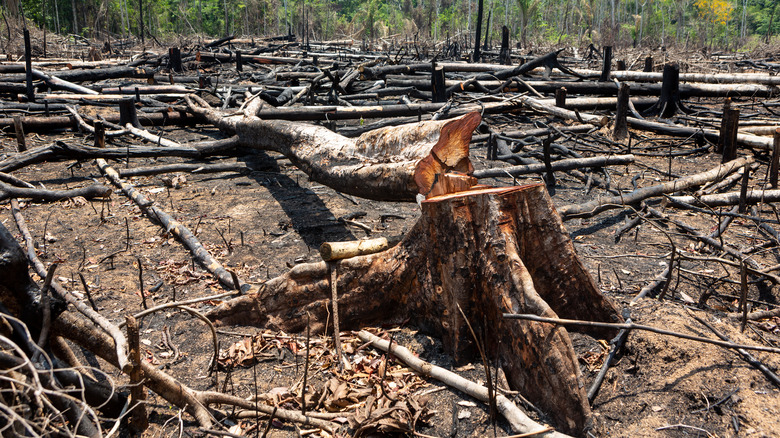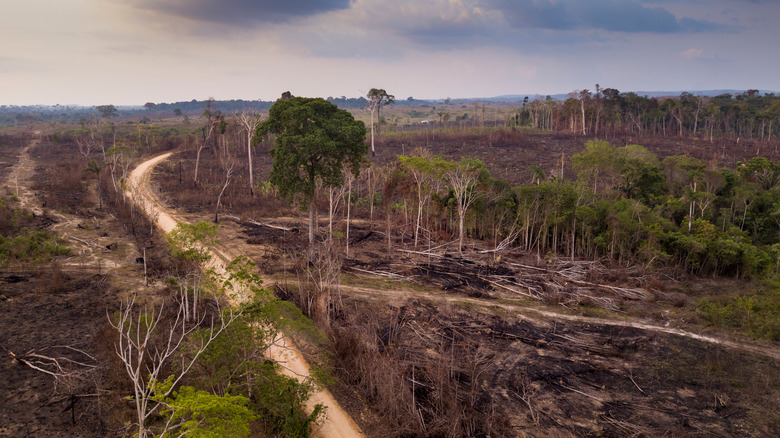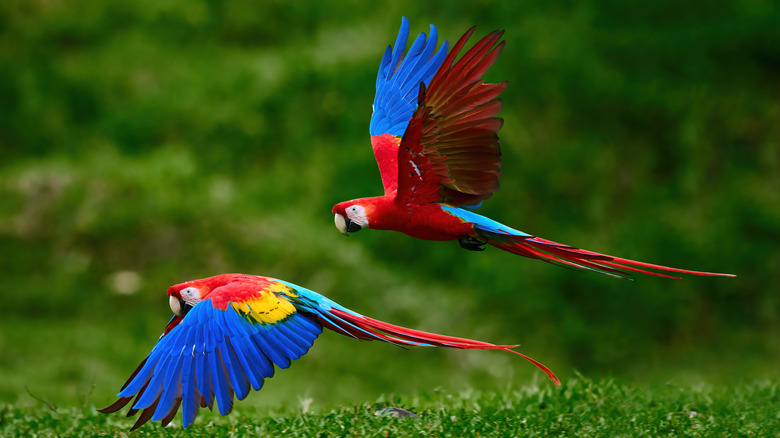The Amount Of Deforestation In The Amazon Rainforest Matches The Size Of The US' Biggest States
We may receive a commission on purchases made from links.
According to Greenpeace, the Amazon rainforest is the largest intact forest in the world. This large, lush forest spans a whopping 6.7 million square kilometers, is home to more than 10% of the world's known biodiversity, and its river is responsible for around 15% of the world's total river discharge into the oceans (via World Wildlife Fund). The Amazon rainforest is one of the most important forests on Earth, yet it is shrinking every day. Why? Human deforestation is to blame.
Decades of human activity and climate change have caused significant damage to the Amazon rainforest. According to a 2019 report by Time, 17% of the forest has already been lost, with predictions that up to 27% of the Amazon will be without trees by 2030 at current deforestation rates. While Brazil had previously aimed to slow the pace of deforestation, there is no goal to stop it (via BBC News in November 2020). In fact, Brazil's environmental authority just granted a permit that will allow a major highway to be paved through the center of the forest, Reuters reports.
Paving a road through the Amazon has many negative effects
The Amazon rainforest has already lost a significant amount of land equaling that of the state of California. According to Greenpeace, this is primarily a result of illegal logging, soy farming, and cattle ranches. As of right now, it doesn't seem like there are any plans to stop deforestation either. BBC News reports that Brazil's president has encouraged both agriculture and mining in the Amazon rainforest, with a 9.5% increase in deforestation since he entered office in 2019.
Paving a major highway through the trees isn't going to help improve deforestation. In fact, it may make it much worse. According to Reuters, the road would open up previously untouched areas of the forest to more people, leading to an increase in illegal logging and land grabbing. One study estimated that the road could lead to a five-fold increase in deforestation by 2030, which is equivalent to the size of the state of Florida (via The Guardian).
Rainforest biodiversity is awe-inspiring
So why is the Amazon rainforest so important, and why would clearing its land be such an issue? First, it is the home of over 24 million people, including hundreds of thousands of Indigenous Peoples. It also contains around 40,000 species of plants, 400 species of mammals, 1,300 different kinds of birds, and "an insect population in the millions" (via Greenpeace). Amazon Conservation puts its size at 1.6 billion acres that cover about 40% of the continent of South America.
In addition to being the home of a diverse population of people, animals, and plants, the Amazon rainforest has the important job of storing carbon, keeping it from entering the atmosphere. The Amazon stores over 150 billion metric tons of carbon, which accounts for more than a third of the carbon stored by tropical forests worldwide (via Amazon Conservation). Deforestation has caused a decrease in the amount of carbon the Amazon can store, with some reports stating that up to 20% of the forest is emitting more carbon dioxide than it is absorbing (via BBC News). Further deforestation will lead to a tipping point when the rainforest cannot recover, with devastating impact on global climate, as Time reports.


